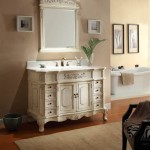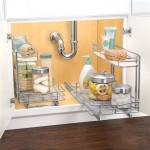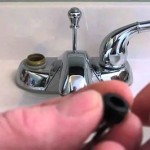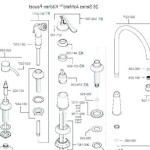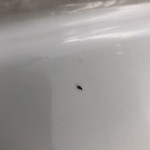How To Remove Mildew Stains From Bathroom Tiles
Mildew, a common household fungus, thrives in damp and poorly ventilated environments, making bathrooms particularly susceptible to its growth. The presence of mildew not only detracts from the aesthetic appeal of the bathroom but can also pose health risks, especially for individuals with allergies or respiratory sensitivities. Effective removal of mildew stains from bathroom tiles is crucial for maintaining a clean, healthy, and visually appealing space. This article provides a comprehensive guide to various methods and precautions for removing mildew stains from bathroom tiles.
Understanding Mildew and Its Growth Factors
Mildew is a type of fungus that appears as a flat, often powdery, growth on surfaces. In bathrooms, it typically manifests as small black, gray, or white spots on tiles, grout, and other damp areas. It's important to distinguish mildew from mold, which penetrates deeper into surfaces and can be more difficult to remove. While both are fungi, mildew is generally considered a surface problem, making it easier to address with appropriate cleaning methods.
Several factors contribute to mildew growth in bathrooms. High humidity levels, often resulting from showers and baths, create an ideal environment for fungal spores to thrive. Poor ventilation exacerbates the problem by trapping moisture, hindering its evaporation. Organic matter, such as soap scum, body oils, and dead skin cells, provides a food source for mildew, further promoting its growth.
Preventing mildew growth involves addressing these underlying factors. Regular ventilation, either through open windows or exhaust fans, helps reduce humidity. Thorough cleaning to remove organic matter minimizes the food source for mildew. Addressing leaks promptly prevents water accumulation that can support fungal growth.
Essential Precautions Before Cleaning
Before initiating any mildew removal process, it is imperative to prioritize safety and protect oneself from potential exposure to fungal spores and cleaning chemicals. Wearing appropriate personal protective equipment (PPE) is crucial. This includes gloves to prevent skin contact with cleaning solutions and mildew spores, as well as a mask to avoid inhaling airborne particles. Eye protection, such as goggles, is also recommended to prevent splashes of cleaning solutions from entering the eyes.
Adequate ventilation is essential during the cleaning process. Opening windows and turning on exhaust fans can help circulate air and minimize the concentration of fumes from cleaning agents. If the bathroom lacks adequate ventilation, consider using a portable fan to enhance airflow. In severe cases of mildew infestation, it may be necessary to restrict access to the area for other individuals, especially those with respiratory sensitivities or allergies.
Testing cleaning solutions in an inconspicuous area prior to applying them to the entire surface is crucial. This helps ensure that the solution does not damage or discolor the tiles or grout. Apply a small amount of the cleaning solution to a hidden area, such as behind a toilet or under a sink, and allow it to sit for a few minutes. Observe the area for any adverse reactions, such as discoloration, etching, or softening of the surface. If no damage occurs, the solution is likely safe to use on the entire surface.
Effective Cleaning Methods for Mildew Removal
Several cleaning methods can be employed to remove mildew stains from bathroom tiles. The choice of method depends on the severity of the mildew infestation, the type of tile and grout, and personal preferences regarding cleaning agents.
1. Vinegar Solution: White vinegar is a natural and effective cleaning agent for removing mildew. Its acidic properties help to kill mildew spores and dissolve stains. To prepare a vinegar solution, simply pour undiluted white vinegar into a spray bottle. Spray the affected areas thoroughly and allow it to sit for at least 30 minutes. For stubborn stains, allow the vinegar to sit for a longer duration, up to an hour. After the soaking period, scrub the tiles and grout with a stiff-bristled brush. Rinse the area thoroughly with clean water and dry with a clean cloth.
2. Baking Soda Paste: Baking soda is a mild abrasive that can help to lift mildew stains without damaging the tiles. To create a baking soda paste, mix baking soda with a small amount of water until it forms a thick paste. Apply the paste to the affected areas and allow it to sit for approximately 15-20 minutes. Scrub the tiles and grout with a brush or sponge. Rinse the area thoroughly with clean water and dry with a clean cloth. For persistent stains, baking soda can be combined with vinegar to enhance its cleaning power. Apply baking soda to the affected area, then spray with white vinegar. The mixture will fizz and help to loosen the mildew. Allow the mixture to sit for a few minutes, then scrub and rinse as described above.
3. Bleach Solution: Bleach is a powerful disinfectant and stain remover that can effectively kill mildew. However, it should be used with caution due to its harshness and potential for discoloration. To prepare a bleach solution, mix one part bleach with ten parts water. Always wear gloves and eye protection when working with bleach. Apply the bleach solution to the affected areas using a spray bottle or sponge. Allow it to sit for 10-15 minutes. Scrub the tiles and grout with a brush. Rinse the area thoroughly with clean water and dry with a clean cloth. Ensure the bathroom is well-ventilated during and after using bleach. Avoid using bleach on colored grout or porous tiles, as it may cause fading or damage.
4. Hydrogen Peroxide: Hydrogen peroxide is a less harsh alternative to bleach that can still effectively remove mildew stains. It is also a disinfectant and can help to kill mildew spores. Pour a 3% hydrogen peroxide solution into a spray bottle. Spray the affected areas thoroughly and allow it to sit for 10-15 minutes. Scrub the tiles and grout with a brush or sponge. Rinse the area thoroughly with clean water and dry with a clean cloth. Hydrogen peroxide is generally safe for use on most surfaces, but it is always recommended to test it in an inconspicuous area first.
5. Commercial Mildew Removers: Numerous commercial mildew removers are available on the market. These products typically contain chemicals specifically designed to kill mildew and remove stains. Always follow the manufacturer's instructions carefully when using commercial mildew removers. Wear appropriate PPE, such as gloves and eye protection, and ensure adequate ventilation. Test the product in an inconspicuous area before applying it to the entire surface. Some commercial mildew removers may contain harsh chemicals that can damage certain types of tiles or grout. Be sure to choose a product that is specifically formulated for use on bathroom tiles.
6. Steam Cleaning: Steam cleaning is a chemical-free method for removing mildew. The high temperature of the steam helps to kill mildew spores and loosen stains. Use a steam cleaner with a nozzle attachment to direct steam onto the affected areas. Move the nozzle slowly and steadily over the surface, allowing the steam to penetrate the mildew. Wipe the surface with a clean cloth to remove any residue. Steam cleaning is particularly effective for removing mildew from grout lines. It is safe for use on most types of tiles and grout, but it is always a good idea to test it in an inconspicuous area first.
Preventative Measures to Inhibit Future Growth
After successfully removing mildew stains, implementing preventative measures is crucial to inhibit future growth and maintain a clean, healthy bathroom environment. These measures focus on controlling moisture levels, improving ventilation, and maintaining regular cleaning routines.
Improving ventilation is paramount. Ensure that the bathroom is adequately ventilated by opening windows and using exhaust fans during and after showers and baths. If the bathroom lacks an exhaust fan, consider installing one to effectively remove moisture-laden air. Leaving the bathroom door slightly ajar after showering can also promote air circulation and reduce humidity.
Reducing moisture levels is another key strategy. Promptly repair any leaks from faucets, showerheads, or pipes to prevent water accumulation. Wipe down wet surfaces, such as shower walls and floors, after showering to remove excess moisture. Consider using a squeegee to remove water from shower doors and walls. Encourage family members to avoid leaving wet towels and washcloths in the bathroom, as these contribute to moisture buildup.
Maintaining a regular cleaning routine is essential for preventing mildew growth. Clean the bathroom regularly, paying particular attention to areas prone to mildew, such as tiles, grout, and shower curtains. Use a mildew-resistant cleaning product or one of the cleaning methods described above. Inspect the bathroom regularly for signs of mildew and address any problems promptly. Re-caulk or seal any cracked or damaged grout to prevent water from penetrating behind the tiles. Consider using a mildew-resistant caulk or sealant. Periodically clean or replace shower curtains and liners to prevent mildew growth. These simple yet effective measures can significantly reduce the risk of mildew recurrence and maintain a clean, healthy bathroom environment.

Here S How Remove Mildew From Bathroom Tile Grout

How To Clean Mold In Shower Grout Tips And Tricks Certified Care

How To Remove Mildew Stains From Bathroom Tiles Ceramic Tile Repair

Black Mold In The Shower How To Clean It Kitchen With Matt

3 Best Ways To Get Rid Of Hard Water Stains From Bathroom Tiles Kent

Rmr Tub And Tile Cleaner Mold Mildew Stain Remover Solutions Llc

How To Get Rid Of Pink Mold In Your Shower

Black Mold In The Shower How To Clean It Kitchen With Matt

How To Clean Bathroom Tile And Grout Reviews By Wirecutter

What Is The Best Way To Clean Shower Grout Mold Anita S Housekeeping
Related Posts
